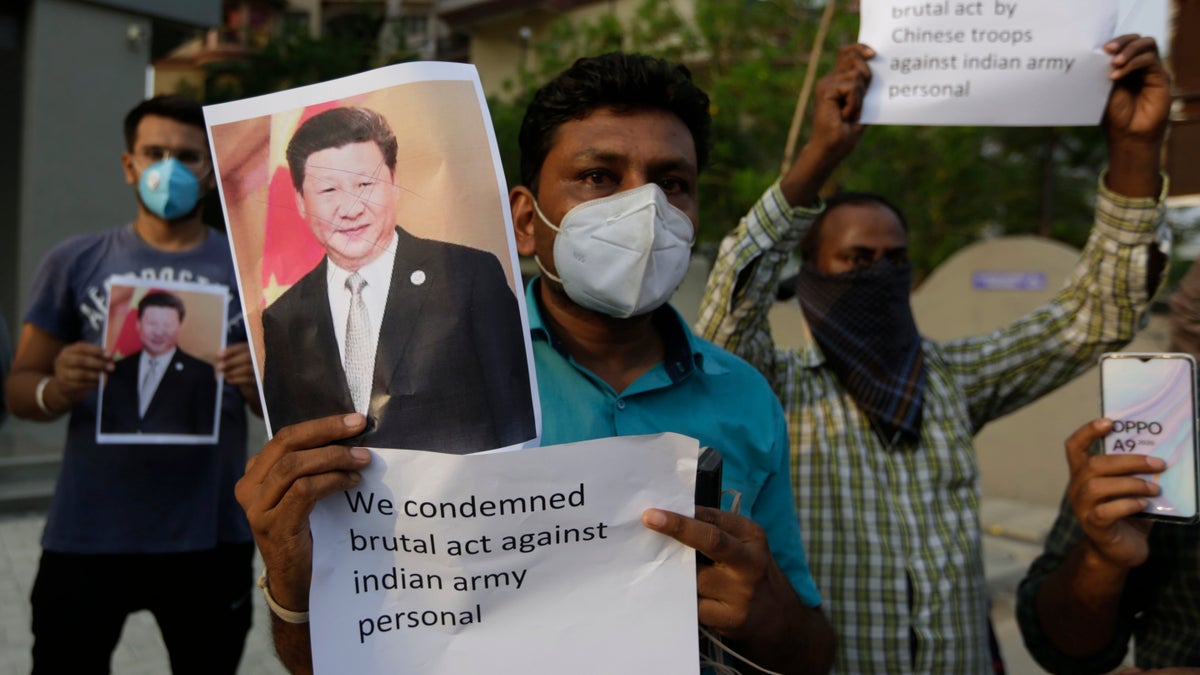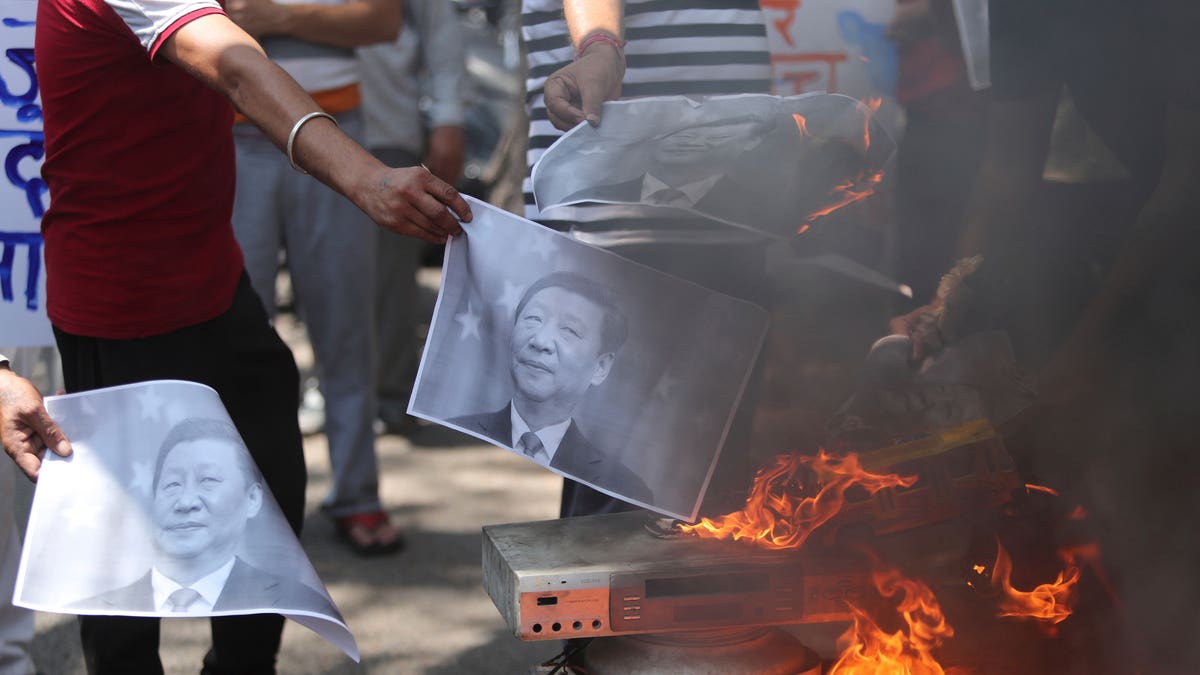Mike Pompeo on China's threats to Pelosi: It tells you what America needs to do
Former Secretary of State Mike Pompeo discusses the true threat the Chinese Communist Party poses to the United States and how America should respond to China's aggression
Two years ago, in below freezing temperatures and under the cover of darkness, Chinese soldiers crept through the high-altitude Galwan Valley. Armed with homemade weapons, including iron rods studded with spikes and wooden clubs wrapped with barbed wire, they attacked a contingent of Indian soldiers. The medieval, hand-to-hand combat lasted for six hours.
When the brutal melee was over, 20 Indian soldiers had been killed and, according to Indian media, over 40 Chinese PLA soldiers were dead. Though China has never officially released the number of its casualties, the event is considered to be the deadliest clash between the two nuclear neighbors since 1975.

A man holds a photograph of Chinese President Xi Jinping during a protest in Ahmedabad, India, June 16, 2020, after Indian soldiers were killed in a deadly border clash with Chinese forces. (AP Photo/Ajit Solanki)
Had both sides not respected the decades-long agreement banning the use of firearms along the contested border area referred to as the Line of Actual Control, the outcome – both on the battlefield and the global stage – could have been much worse.
In the aftermath of the attack, New Delhi issued an array of reprisals, including banning Chinese apps from the Indian app store. With India rapidly approaching 1 billion smartphone users, it was a significant blow to the Chinese tech community. It also served as a savvy national security move as it eroded China’s ability to mine the personal and biometric data of India’s citizens.
INDIA, CHINA LAUNCH BLAME GAME AFTER CROSS-BORDER BRAWL LEAVES 20 DEAD
For its part, the United States was quick to identify a means by which it could help strengthen its growing security partnership with India – not via fighter jets and missile systems, but rather by providing a wide range of cold weather gear, allowing the Indian military to "overwinter" in the Galwan Valley, thereby hampering any future attempts by Beijing to violate and seize Indian sovereign territory uncontested.

Indians burn photographs of Chinese President Xi Jinping during a protest against the Chinese government in Jammu, India, June 2020. (AP)
Researching my thriller, "Rising Tiger," I was shocked not only by the savagery of the Galwan Valley attack, but also by China’s ongoing efforts to slip a proverbial noose around India’s neck through its salami-slicing, territorial incursions into Bhutan, the expansion of its sphere of influence via its Belt and Road initiative in Pakistan, and its network of commercial and military facilities across the Indian Ocean known as the String of Pearls.
BLAME BIDEN'S RECKLESS WAFFLING OVER PELOSI'S TAIWAN TRIP FOR CREATING AN INTERNATIONAL INCIDENT
India, as the world’s largest democracy, is a natural ally for the United States, the world’s oldest. From our supply chain (which is far too dependent on China) to military cooperation, there is much America can benefit from a formal alliance with India.
In fact, as Chinese economic and military expansionism continues to grow, now is the time to move beyond the Quadrilateral Security Dialogue of Australia, India, Japan and the United States, to a more robust, official organization.
CLICK HERE TO GET THE OPINION NEWSLETTER
While an Asian version of NATO is at the heart of my upcoming thriller, and thereby fiction, how much longer can we afford to let the idea remain such? As the Chinese proverb says, "An inch of time is an inch of gold, but an inch of time cannot be purchased for an inch of gold."
Beijing’s ambitions are obvious for everyone to see. We need to invest our time and our gold accordingly. As the Indian proverb says, "Life is not a continuum of pleasant choices, but of inevitable problems that call for strength, determination, and hard work." It is high time we, as a nation, get to work.



